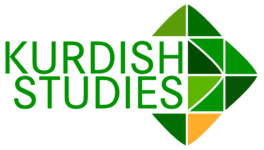Russian Image Formation Through the Image of the President of the Country in the English-Language Media in 2020-2023 (Based on the Materials of the British and American Press)
PhD in Philological sciences, senior lecturer, Рeoples’ Friendship University of Russia (RUDN University), 6 Miklukho-Maklaya Street, Moscow, 117198, Russian Federation
Barabash V.V
Doctor in Philological sciences, professor, Рeoples’ Friendship University of Russia (RUDN University), 6 Miklukho-Maklaya Street, Moscow, 117198, Russian Federation
Burdovskaya E Yu
PhD in Cultural studies, associate professor, Рeoples’ Friendship University of Russia (RUDN University), 6 Miklukho-Maklaya Street, Moscow, 117198, Russian Federation
Lavrentieva M.Y
PhD in Philological sciences, assistant lecturer, Рeoples’ Friendship University of Russia (RUDN University), 6 Miklukho-Maklaya Street, Moscow, 117198, Russian Federation
Melnichenko A.A
Student of Рeoples’ Friendship University of Russia (RUDN University), 6 Miklukho-Maklaya Street, Moscow, 117198, Russian Federation
Abstract
The article is devoted to the research of the media image of the Russian President Vladimir Putin in the English-language media (The Independent, The Guardian, The New York Times and The Washington Post). In the course of the study, the authors after a semantic-stylistic analysis of 94 articles have identified the main semantic dominants that are used to form the image of Putin. Stylistic devices (metaphors, allusions, antithesis, hate speech, retrospection, idioms) that contribute to the creating of a media image were also identified. The study found that the media image of Vladimir Putin formed by the English-language media during 2020-2023 has predominantly negative characteristics: the British press creates the media image of Vladimir Putin as a villainous dictator, the American press create the image of Putin as a monarch and a dictator. The research has shown three new semantic dominance in creating the portrait of Vladimir Putin: Vladimir Putin as a furious and angry leader, Vladimir Putin as a leader in perplexity, Vladimir Putin as a reckless leader. The authors believe that such an image of the Russian leader contributes to the formation of attitudes towards the country as a whole, as well as attitudes towards Russians as a nation. This may lead to a further aggravation of the crisis.
